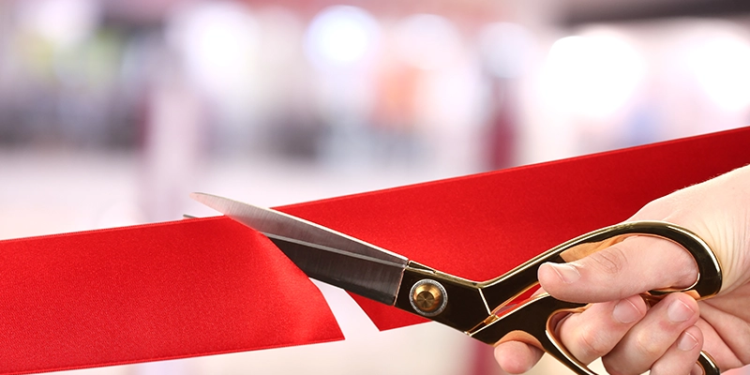More responses came in over the weekend. It is interesting to note that=20
several respondents have used a plantarflexion assist successfully. In theor=
y it=20
should not work, but I am eager (yet skeptical) to see if it is in fact an=20
appropriate configuration.=20
Thanks to all. Troy Fink, CO
(original post is included at the end)
ADDITIONAL RESPONSES:
*********************************
You’re between the hard place and the rock. Perhaps your patient
could obtain another Rx from another Doc. Or you could fill the Rx as
it is written and have the patient sign a release for you (legally a
worthless effort). Or have them hand carry the AFO to the Doc after you
fitted it and have the patient tell the Doc that this just won’t fly.
**************************************************
As the Surgeon requests…did you go to Medical School?? RESPECT is my
focus…and yes I have used a PF spring..doesn’t give much but a little is
better than nothing…double action ankle joint STIFF footplate,,even shank
the shoe with a jester toe if you are concerned about toe drag…remember
the foot is three parts rear foot mid foot and forefoot…don’t allow DF
anywhere…=20
*************************************************
HEY TROY — you are correct with your line of thought… .You learned well i=
n=20
school ! A plantar assist will cause a foot drop and toe drag. You could do=20=
a=20
DAAJ and when the doctor sees the plantar flexed toe and asks you to change=20
it— it will be easy to fix.=20
Best of luck=20
***********************************************
I would do as the physician asked, especially if he or
she is one you want to cultivate a relationship with.
If it doesn’t work, it still can be a good bridge to
communication with the doc. One way would be to do
the dorsi stop at neutral (I use 3/8 dacron, doubled
and copper rivited to the top and bottom pieces) and
use tamarak hinges put in reverse for a plantar
flexion assist. The tamaraks won’t know the
difference if they are reversed, and you can either
show the doc that it doesn’t work or maybe you’ll be
surprised. I believe you are correct that your
patient will not benefit from it, but it will be easy
to change later to either neutral or dorsi assist
simply by changing the tamarak hinges. Does he have
active dorsiflexion? Also if you keep the cast, you
could easily repull something else without modifying
or recasting. Sometimes I don’t agree with the RX but
do it anyway to see how it works or doesn’t work. Good
luck and let us know what you do.=20
***********************************************************
Please contact Otto Bock. I think they have a joint with both plantar flexio=
n=20
and dorsiflexion assissts incorporated into the system.
******************************************
It is always a problem when a doctor is insistent on using a particular=20
method of control that you are uncomfortable with using. With this patient I=
=20
don’t think you need to be as concerned with clearance as long as he gets=20
back to 90 degrees. In your brief description you do not mention whether his=
=20
injury has caused any deficits in ROM or any weakness. If its a strait=20
forward Achilles injury I would use a dual action ankle joint and if you are=
=20
concerned with the amount of spring assist just reduce it. The doctor gets=20
what he wants and you have the ability to control the amount of stop and=20
assist through most of the normal ROM of the ankle.
Good luck with this doctor,=20
**************************************************
Many experienced docs would argue permitting volitional activation of the PF=
=E2=80=99
s does, in fact, =E2=80=9Chave negative effect=E2=80=9D on compromised TA. R=
isk/harm not only=20
comes from over-stretching (allowing dorsi-flexion past 90) but also=20
volitional activation of PF=E2=80=99s (permitting PF range). If you permit f=
ree PF in=20
orthosis, Pt will no doubt engage their gastroc/soleus. Forces generated by=20=
this group=20
during gait are extremely high/localized and potential for delaying healing=20
(tendonitis) or re-injury (s/p rupture) cannot be denied. If your doc buys i=
nto=20
the =E2=80=9Creported=E2=80=9D benefits of early mobilization, perhaps it co=
uld be initiated=20
in controlled setting (i.e. permit PF in orthosis with partial weight-bearin=
g=20
only or with progressive resistance therabands under P.T. supervision outsid=
e=20
of orthosis). With an orthosis it=E2=80=99s all (permitting unrestrained,=20
uncontrolled PF) or nothing (solid/floor-reaction) and benefits of =E2=80=
=9Call=E2=80=9D may have=20
negative effect. Unless knee extensors are compromised, creating an =E2=80=
=9Cexcessive=E2=80=9D=20
flexion moment down slopes is rare at best. It simply reduces surface area i=
n=20
contact with ground and makes slip/fall more likely). We typically fab solid=
AFO=20
and incorporate internal heel pad which can be thinned to permit progressive=
=20
stretching as indicated. Great case to review and look forward to all=20
responses! I=E2=80=99m sure they=E2=80=99ll be varied.
************************************
We designed and fit Dan Marino with Plantarflexion assist. He used this=20
particular design for the remainder of his professional career.
=20
We used O.T.S wafer joints dorsi assist set backwards.
****************************************************
Thanks again to all who responded!
Original post:
An orthopedic surgeon has written Rx for articulating AFO with plantarflexio=
n=20
assist. Pt is otherwise active male, 3mos s/p injury with some heeling=20
evident. Doctor says it is okay for pt. to dorsiflex to neutral but not beyo=
nd.
I suggested dorsiflexion stop at about neutral and unrestricted=20
plantarflexion range of motion. I explained that a plantar assist would not=20=
be strong=20
enough to provide heel-off during stance phase. I also stated that I feared=20=
a=20
plantar assist would only complicate swing phase clearance.
The Doctor insists a plantarflexion assist is appropriate. I don’t feel good=
=20
about providing an orthosis in this configuration. I don’t think this is=20
appropriate as the patient will likely trip and fall.=20
Any thoughts? How would you treat a pt. with this diagnosis?
=3D=3D=3D=3D=3D=3D=3D=3D=3D=3D=3D=3D=3D=3D=3D=3D=3D=3D=3D=3D=3D=3D=3D=3D=3D=
=3D=3D=3D=3D=3D=3D=3D=3D=3D=3D=3D=3D=3D=3D=3D=3D=3D=3D=3D=3D=3D=3D
=3D=3D=3D=3D=3D=3D=3D=3D=3D=3D=3D=3D=3D=3D=3D=3D=3D=3D=3D=3D=3D=3D=3D=3D=3D=
=3D=3D=3D=3D=3D=3D=3D=3D=3D=3D=3D=3D=3D=3D=3D=3D=3D=3D=3D=3D=3D=3D
=20




